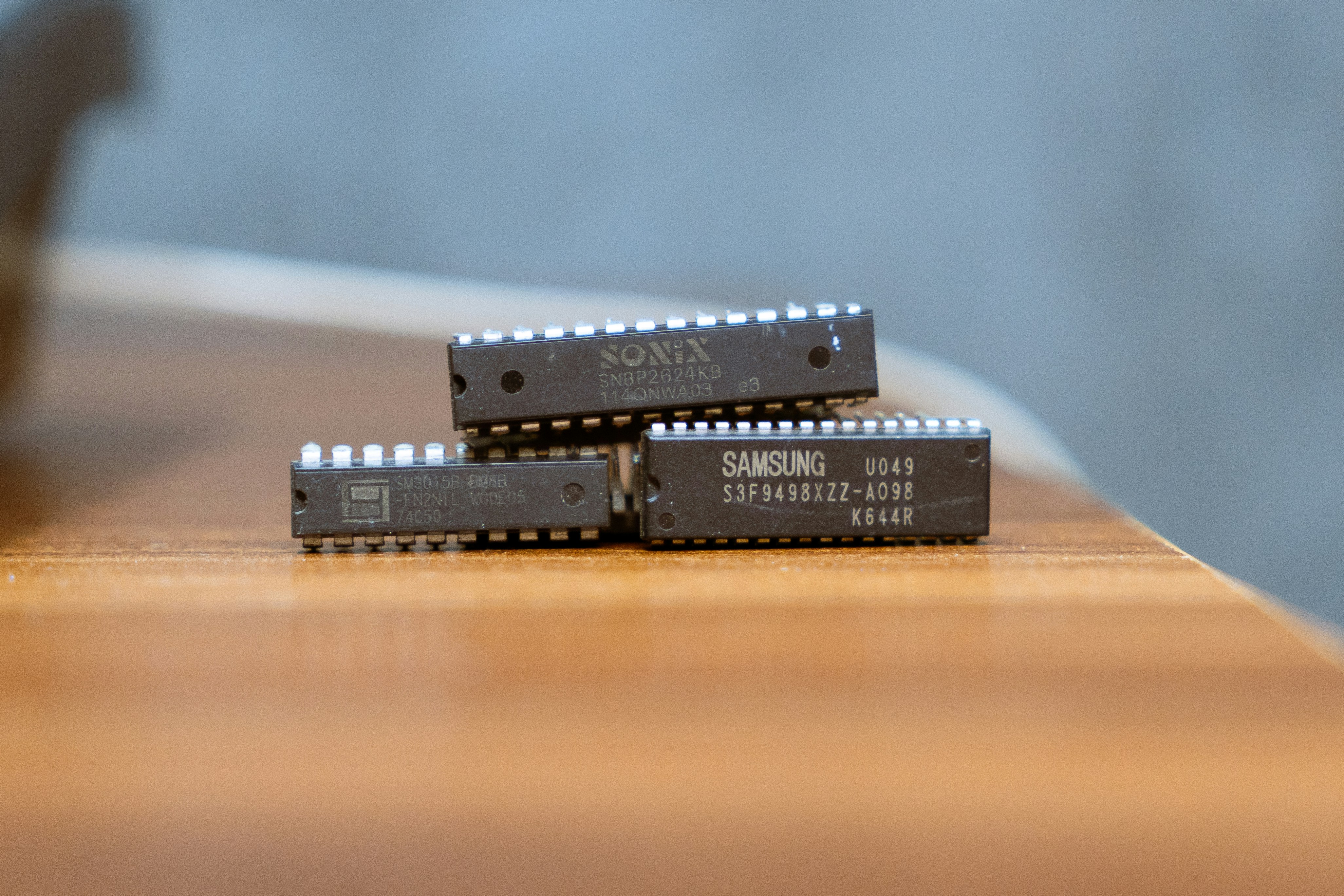
Top 10 Semiconductor Career Myths Debunked: Key Facts for Aspiring Professionals
From powering our smartphones and laptops to driving modern automotive electronics, semiconductors are the unseen but indispensable force behind today’s tech-driven world. These tiny chips fuel innovations in artificial intelligence, 5G communications, cloud computing, and countless other high-impact applications. Despite the industry’s massive global footprint—projected to reach hundreds of billions in revenue annually—many misconceptions still surround what it’s like to build a career in semiconductors.
At SemiconductorJobs.co.uk, we see firsthand how misunderstandings about this crucial sector can discourage talented people from exploring the field. Some believe it’s too niche, suitable only for lab-based PhDs, or overshadowed by newer tech sectors like software or AI. In reality, semiconductors lie at the heart of nearly every digital device, encompassing diverse roles for engineers, researchers, business professionals, and more.
This article debunks the top 10 myths about semiconductor careers—unpacking the wide-ranging opportunities, essential skills, and vibrant growth that define this ever-evolving industry. Whether you’re a student, a seasoned tech professional, or simply curious about how chips shape our modern world, read on to discover why semiconductors offer a dynamic and future-proof path.
Myth 1: You Need a PhD in Physics or Electrical Engineering to Enter Semiconductors
A common assumption is that only those with advanced academic backgrounds—like PhDs in physics, electrical engineering, or materials science—can break into the semiconductor industry. Yes, these credentials can be crucial for research-intensive roles, but they’re far from mandatory across the board.
The Reality
Broad Educational PathsSemiconductor companies hire people from multiple disciplines—chemical engineering, computer science, mechanical engineering, business management, and more. Roles such as process technician, product marketing, test engineer, and supply chain specialist don’t necessarily require a PhD.
Vocational Training and Undergraduate DegreesAssociate’s or bachelor’s degrees in electronics, engineering, or even maths can open doors for entry-level positions in semiconductor fabrication or testing. Many technicians and engineers learn advanced processes on the job or through specialised training.
Certification CoursesInstitutions and online platforms offer courses on semiconductor basics (lithography, etching, device physics, etc.) that can supplement formal education. Short, targeted programmes or certifications can help professionals from adjacent fields pivot into semiconductor roles without dedicating years to a PhD.
Key Takeaway
While advanced degrees are valuable for high-end R&D, the semiconductor field offers a vast range of positions accessible to those with undergraduate or alternative technical backgrounds. On-the-job training and targeted short courses can also bolster your skills and credibility.
Myth 2: Semiconductor Jobs Are Only in Silicon Valley
When people think “semiconductor,” their minds often jump to Silicon Valley’s iconic chip giants. This fosters the belief that major opportunities exist exclusively in California, overshadowing the global nature of semiconductor innovation.
The Reality
Global FootprintSemiconductors are a worldwide endeavour, with significant hubs in Europe (including the UK, Germany, and the Netherlands), Asia (Taiwan, South Korea, China, Japan), and the US (beyond Silicon Valley, places like Texas and Arizona). These regions host manufacturing plants, R&D centres, design studios, and corporate headquarters.
Diverse EcosystemThe global semiconductor supply chain is vast, including chip design, wafer fabrication, packaging, testing, and distribution. These stages often occur in different parts of the world, meaning professionals can find roles close to home—especially in the UK, which boasts companies in design, IP licensing, manufacturing, and research.
Remote and Hybrid RolesAs digital collaboration improves, many semiconductor firms embrace partial or fully remote setups, particularly for design or software-based positions. This flexibility means you might work with international teams without relocating.
Key Takeaway
Although Silicon Valley is a well-known hub, semiconductor jobs thrive globally—from Asia’s manufacturing powerhouses to Europe’s R&D clusters. The UK itself has a strong presence in chip design, research, and technology licensing, creating a broad spectrum of local opportunities.
Myth 3: You’ll Be Stuck in a Cleanroom All Day
Images of technicians in “bunny suits” (protective suits) in semiconductor fabs have shaped the stereotype that every semiconductor role involves meticulous, hands-on work in ultra-clean environments. While fab-based jobs exist, they’re not representative of the entire sector.
The Reality
Diverse Role SettingsMany semiconductor professionals work in office or lab environments for tasks like circuit design, simulation, software development, marketing, and sales. Even within fabs, roles range from equipment maintenance to process engineering—and not everyone requires head-to-toe cleanroom attire daily.
Research Labs and Office-Based TeamsSome roles revolve around fundamental research, chip architecture design, or product marketing. These employees may rarely step into a manufacturing plant. Instead, they collaborate with teams across supply chains or focus on advanced modelling at a computer workstation.
Hybrid and Remote FlexibilityMany tasks—like drafting circuit schematics, verifying designs, or planning product roadmaps—are done online. With digital collaboration tools, a segment of the workforce can operate partially or fully remotely, coordinating with fab teams as needed.
Key Takeaway
While cleanroom-based roles are important, the industry also offers plenty of office, lab, remote, and collaborative positions in design, research, operations, management, and sales. You won’t necessarily spend your entire work life in a bunny suit.
Myth 4: Semiconductor Work Is Only for “Chip Geeks”
Another misconception holds that semiconductors are exclusively for ultra-technical “chip geeks” enthralled by doping processes and transistor physics. This notion neglects the fact that the semiconductor value chain also relies on business, marketing, supply chain, and project management expertise.
The Reality
Cross-Functional ExpertiseThe semiconductor ecosystem comprises marketing strategists, supply chain coordinators, quality assurance managers, financial analysts, HR professionals, and more—none of whom need deep knowledge of doping processes or photolithography.
Project and Product ManagementBringing a new semiconductor product to market involves complex timelines, stakeholder coordination, resource allocation, and risk management. Professionals skilled in leadership, communication, or product strategy find fulfilling careers in these domains.
Customer-Facing RolesSales engineers or customer support representatives interface with electronics manufacturers or consumer tech companies, helping them adopt new chips or troubleshoot issues. These roles demand interpersonal skills, product knowledge, and creative problem-solving rather than solely technical wizardry.
Key Takeaway
While engineering and physics roles abound, the semiconductor field also requires business-savvy, marketing-minded, and organisationally skilled professionals. If you love tech but don’t fancy hardcore R&D, you’ll still find opportunities aplenty.
Myth 5: The Industry Is in Decline or Saturated
Consumer headlines about cyclical downturns or certain companies scaling back production can lead some to believe the semiconductor sector is past its prime or too saturated for newcomers. The reality paints a far more dynamic picture.
The Reality
Continual InnovationWith AI, 5G, autonomous vehicles, Internet of Things (IoT), and cloud computing on the rise, demand for advanced semiconductors keeps growing. Nodes are shrinking, packaging is evolving, and new paradigms (like quantum or neuromorphic chips) spark ongoing R&D.
Ups and Downs, But Growth PrevailsThe semiconductor market is cyclical—affected by global economics, consumer trends, and inventory corrections. However, over the long term, the industry has expanded substantially, given the universal need for faster, more efficient chips.
Emerging Players and Start-upsBeyond established giants, new ventures continually form around niche technologies—like gallium nitride (GaN) power devices, photonics, and advanced packaging methods. These start-ups offer dynamic career prospects, fresh funding, and collaboration with academic labs.
Key Takeaway
While the industry experiences cyclical phases, overall demand for chips—and those who design, manufacture, and market them—continues rising as technology seeps into every aspect of modern life.
Myth 6: Advances in AI and Software Overshadow Semiconductors
The surging popularity of data science, AI, and software-based solutions might imply hardware is an afterthought. Some think semiconductor innovations are “old news” compared to the hype around machine learning or blockchain.
The Reality
Hardware as a CatalystAI and software breakthroughs rely on powerful processors, GPUs, TPUs, and specialised accelerators. These hardware advancements come directly from semiconductor R&D, meaning software leaps often hinge on next-gen chip performance.
Customisation BoomData centres, automotive OEMs, and HPC providers increasingly demand custom silicon solutions—optimised for deep learning, cryptography, or edge applications. This push towards specialised chips underscores how crucial semiconductor engineers remain.
Interdisciplinary CollaborationThe best solutions often combine software and hardware. AI hardware engineers optimise microarchitectures for neural networks, while data scientists write algorithms that capitalise on the new chip’s strengths. Both skill sets shape modern computing’s future.
Key Takeaway
Semiconductors aren’t overshadowed; they form the physical backbone enabling AI, big data, and software revolutions. As technology grows more specialised, hardware experts remain vital, forging the advanced chips that make cutting-edge software feasible.
Myth 7: Jobs Are All Technical—No Room for Creativity
People may imagine semiconductor roles as formulaic or repetitive, focusing on repetitive tasks like wafer inspection or strictly defined manufacturing steps. But the sector actually rewards creative thinking across multiple dimensions.
The Reality
Innovative Chip ArchitecturesEngineers conceive new architectures to boost performance, reduce power consumption, or shrink footprints. Whether designing multi-core SoCs (System on Chips) or exploring 3D stacking, creativity is central to solving challenges in transistor physics and circuit design.
Process OptimisationFabrication teams constantly iterate on process flows—tweaking doping concentrations, refining etch techniques, and testing novel materials. Each improvement demands out-of-the-box problem-solving and real-time experiments.
Business and Marketing IngenuitySuccessful product launches, brand positioning, and future roadmaps also hinge on creative strategy. Marketing teams differentiate complex solutions for diverse markets; sales experts craft custom deals that fit varied client needs.
Key Takeaway
The semiconductor field thrives on innovation—be it in device physics, manufacturing processes, or go-to-market strategies. If you relish creative challenges, you’ll find ample scope for ingenuity here.
Myth 8: All Semiconductor Jobs Involve Tedious Manual Work
Some still associate semiconductor manufacturing with laborious manual tasks—like wafer handling or packaging—done repetitively. While lower-skilled roles do exist, the overall industry has undergone substantial automation, requiring higher-level expertise and decision-making.
The Reality
High Automation in Modern FabsCleanrooms now heavily rely on automated wafer transport systems, robotic arms, and advanced tools for deposition, photolithography, and metrology. Human operators oversee, troubleshoot, and optimise these processes rather than perform brute-force manual tasks.
Quality Control, Data Analytics, and AIWith so many sensors and data points collected in real time, engineers lean on data analytics, AI, and machine learning to streamline yield improvement and detect anomalies. This fosters roles focused on high-level interpretation and problem-solving.
Specialised Production RolesEven in production, the day-to-day can be intellectually stimulating—devising ways to reduce defects, implementing Lean or Six Sigma methodologies, or coordinating complex supply chains. Careers in manufacturing engineering or operations can blend hands-on oversight with strategic planning.
Key Takeaway
Modern semiconductor fabrication heavily automates repetitive tasks. Today’s professionals often oversee complex tools, harness data insights, and engage in sophisticated problem-solving to ensure high-yield, high-quality chip production.
Myth 9: There’s No Future for Newcomers—All the Important Innovations Are Done
Given that semiconductors have been around for decades—tracing back to the 1950s—some might think the major breakthroughs are in the past. They suspect new talent will only handle incremental refinements.
The Reality
Continuous Scaling (and Beyond)Moore’s Law may be slowing, but the quest for smaller nodes hasn’t ended. Research into sub-3 nm processes, advanced transistor designs (like gate-all-around FETs), and new materials (like graphene or carbon nanotubes) continues at a rapid clip.
Packaging and Heterogeneous IntegrationAs monolithic scaling meets physical limits, innovators explore 2.5D/3D packaging, chiplets, and advanced integration techniques. These changes demand fresh minds to solve novel challenges in heat dissipation, interconnect design, and testing.
Disruptive ArchitectureQuantum computing, neuromorphic chips, photonics-based logic—these frontiers remain in early or experimental stages. Engineers, researchers, and entrepreneurs can shape entirely new computing paradigms with major commercial and societal impacts on the horizon.
Key Takeaway
Semiconductor innovation is far from over—on the contrary, it’s accelerating in directions like advanced materials, packaging, and novel computing architectures. There’s ample scope for newcomers to lead next-generation breakthroughs.
Myth 10: All Roles Are the Same in the Semiconductor Industry
Finally, it’s easy to assume that every job in semiconductors revolves around the same tasks—fabrication line supervision or chip design. This overlooks the industry’s rich tapestry of roles that cater to a variety of skill sets and interests.
The Reality
Design and Verification
Front-End Design: Crafting logic, microarchitecture, or circuit layouts.
Back-End Design: Physical synthesis, place-and-route, timing closure.
Verification: Testing and simulating chips to confirm they meet specifications.
Fabrication and Process
Process Engineers: Focus on photolithography, etch, diffusion, and deposition.
Equipment Technicians: Maintain and troubleshoot advanced production machinery.
Yield Enhancement: Analyse defect data, propose refinements to boost wafer yields.
Packaging, Sales, and Business
Packaging and Testing: Assembling chips into packages, verifying final performance.
Sales and Marketing: Positioning chips in competitive markets, liaising with OEM clients.
Product Management: Defining product roadmaps, interfacing with R&D, ensuring profitability.
Key Takeaway
Semiconductor careers aren’t one-size-fits-all. If you’re an engineer, you might choose design, test, or process roles. If you’re business-focused, marketing and supply chain jobs abound. From R&D labs to global sales, there’s a niche to match your strengths and ambitions.
Practical Tips for Launching or Advancing a Semiconductor Career
Having addressed key myths, how do you start or grow in this compelling sector?
Identify Your InterestsAre you drawn to front-end chip design, process engineering, supply chain logistics, or marketing? Pinpointing a focus helps guide your skill-building and networking.
Build Foundational Knowledge
Technical: For engineering roles, strengthen your grasp of electronics fundamentals, device physics, VLSI (Very Large Scale Integration), or CAD tools.
Business/Management: If you prefer business roles, learn about industry dynamics, product lifecycles, compliance, and global supply chains.
Gain Practical ExperienceInternships, co-ops, or entry-level roles in electronics or manufacturing environments can provide hands-on exposure. If that’s not an option, consider personal projects or online labs—like simulating circuits or exploring FPGA boards.
Utilise Online Resources
MOOCs: Platforms like Coursera or edX offer courses in semiconductor physics, CMOS design, or advanced manufacturing processes.
Webinars and Conferences: Organisations such as SEMI, IEEE, or local electronics associations frequently host events, offering insights into latest trends and networking opportunities.
Network Within the CommunityAttend trade shows (e.g., SEMICON), local meetups, or hackathons focusing on electronics or hardware. LinkedIn groups and online forums can also connect you with industry professionals who share advice and job leads.
Stay Updated on Industry TrendsThe semiconductor world evolves rapidly—follow relevant news on node transitions (e.g., from 7 nm to 5 nm), 3D packaging methods, or supply chain shifts. Reading dedicated tech media keeps you current and conversation-ready.
Leverage Specialised Job BoardsSemiconductorJobs.co.uk aggregates postings for design engineers, process technicians, operations managers, marketing leads, and more—tailored specifically to the semiconductor domain. Checking regularly helps you gauge employer needs and find suitable roles.
Focus on Soft SkillsProject management, communication, and teamwork remain vital. Cross-functional collaboration—where marketing meets engineering or supply chain meets design—shapes modern semiconductor success.
Conclusion
Semiconductors form the backbone of our digital era, enabling transformative technologies in computing, mobile devices, automotive systems, and beyond. Yet, widespread myths can make the industry seem either too exclusive or outdated: the misconception that only PhD “chip geeks” are welcome; that roles are scarce outside of cleanrooms or Silicon Valley; or that hardware is overshadowed by software. In truth, the sector is vast, global, and brimming with innovation—demanding a myriad of skill sets, from advanced R&D to marketing and operations.
If you’re drawn to this foundational field, don’t be deterred by misconceptions. You can break in with a variety of educational backgrounds—bachelor’s degrees, certifications, or even business/marketing expertise that complements the engineering side. The sector’s cyclical nature can confuse casual observers, but long-term trends—like AI acceleration, 5G/6G rollouts, HPC expansions, and emerging quantum or neuromorphic computing—underscore robust future growth.
Whether you aim for hands-on wafer fabrication, sophisticated chip design, product management, or supply chain coordination, semiconductors offer an exciting, vital path. Your innovations could power the next generation of smartphones, shape breakthroughs in AI, or enable more sustainable electronics. Explore SemiconductorJobs.co.uk to discover the array of open positions—technical and non-technical alike—and see how you can help build the chips that underpin modern life.


